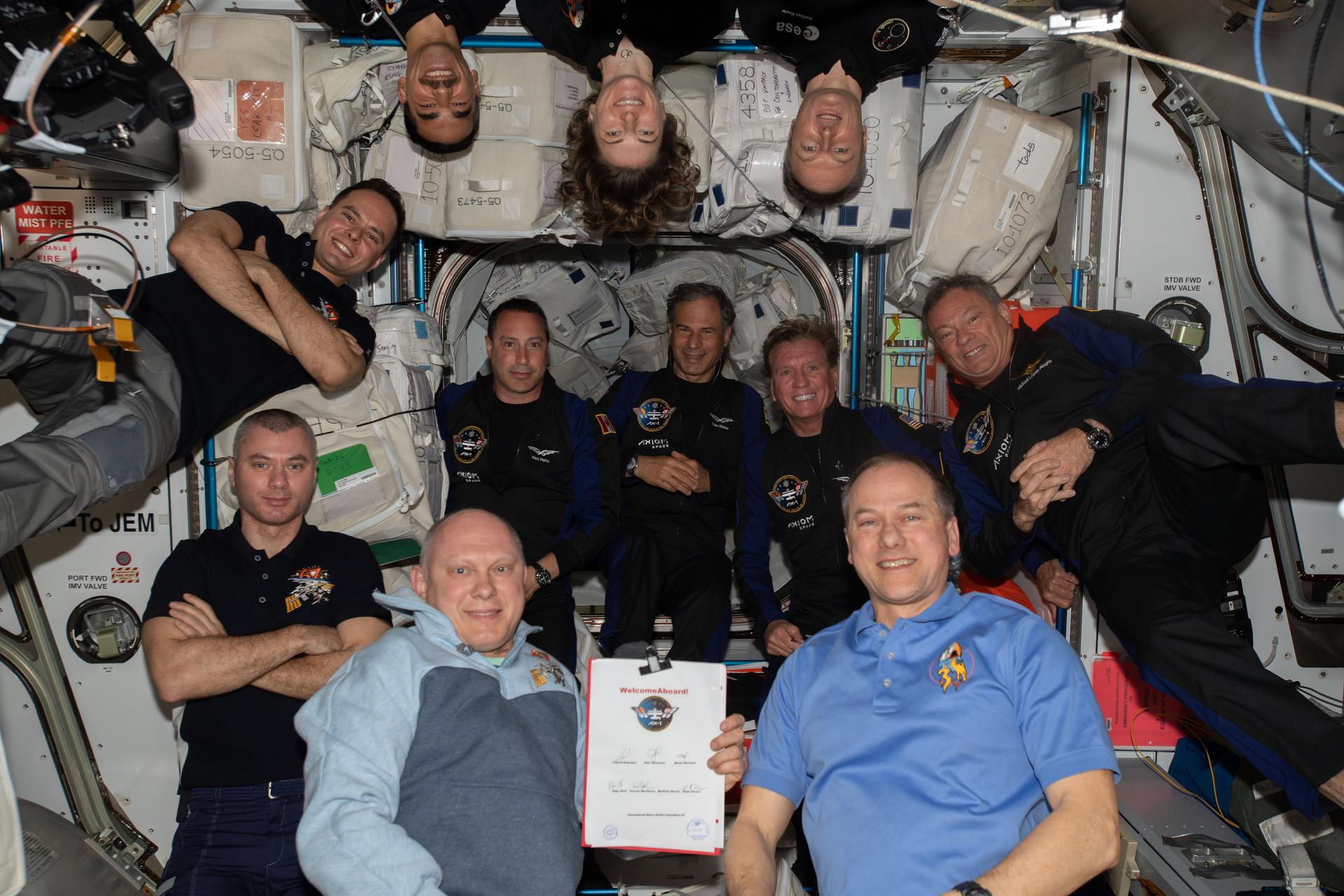Private crew who paid $55m per seat were exhausted by ‘frenetic’ workload in space
Three paying customers and experienced Nasa astronaut were part of first all-private mission to space station

Your support helps us to tell the story
From reproductive rights to climate change to Big Tech, The Independent is on the ground when the story is developing. Whether it's investigating the financials of Elon Musk's pro-Trump PAC or producing our latest documentary, 'The A Word', which shines a light on the American women fighting for reproductive rights, we know how important it is to parse out the facts from the messaging.
At such a critical moment in US history, we need reporters on the ground. Your donation allows us to keep sending journalists to speak to both sides of the story.
The Independent is trusted by Americans across the entire political spectrum. And unlike many other quality news outlets, we choose not to lock Americans out of our reporting and analysis with paywalls. We believe quality journalism should be available to everyone, paid for by those who can afford it.
Your support makes all the difference.The crew of Axiom-1, the first all-private mission to the International Space Station, found the workload in space was heavier than they expected.
The Axiom-1 crew, Eytan Stibbe, Larry Connor, and Mark Pathy, who each paid $55 million for the flight, along with mission commander and former Nasa ISS astronaut Michael López-Alegría, arrived on the ISS on 9 April for an eight-day mission but quickly found their workload exhausting, according to reporting by Space News.
“The pace was frenetic in the beginning,” Space News reported López-Alegría as saying at the 13 May press conference upon the crew’s return.
That pace led to inevitable bottlenecks in the scheduled scientific experiments the Axiom-1 crew undertook, which in turn pulled Nasa astronauts off their tasks to help, according to Laura Forczyk, owner of the space consulting firm Astralytical, who said the problem came up at a recent meeting of the Nasa Aerospace Safety Advisory Panel.
“It put a big strain not only on the crew but also on Mission Control,” she said.
The Axiom-1 crew ultimately spent more time in space than expected, 15 days rather than eight due to bad weather on Earth, returning on 25 April.
“I can imagine they were relieved when they've had to delay their return for so long,” Ms Forczyk said. “they could take that time to look out the window.”
But the Axiom-1 crew’s difficulties were not just a matter of untrained private astronauts who were unused to the rigours of work in space, Ms Forcyzk said, and Mr Stibbe is even a former Israeli fighter pilot. It was not Mr López-Alegría’s first time in space either.
“They were very well trained, they underwent months of training with Axiom similar to the kind of training that NASA does,” she said. “I think the main culprit was that they over-scheduled themselves.”
Ms Forczyk finds it surprising Axiom over-scheduled their crew, given the experience of Mr López-Alegría and other leaders with Nasa experience at Axiom Space, the company behind the Axiom-1 mission.
“Maybe they were just so eager to do the science they agreed to do, eager to demonstrate that this isn’t just a tourism mission,” Ms Forczyk said. “That has been such a big criticism of private individuals flying to space that maybe through the sheer amount of research they took on, they were trying to change the narrative.”
But astronaut scheduling is an exacting science. Even after taking into account the several days it can take even veteran astronauts to adapt to weightlessness, which can bring on nausea and other symptoms of space adaptation syndrome, Nasa spends a lot of time managing astronaut time down to the minute, according to Ms Forczyk.
“Astronauts up on the space station are heavily scheduled, “ she says. “Perhaps that is another lesson learned. That actually if they expect such a heavy workload from their private individuals flying to space, then maybe they need to take on that kind of minute by minute scheduling that NASA has extensive experience doing.”
But exacting astronaut scheduling experience is not exclusive to Nasa. Space Adventures, another space tourism company, has been flying astronauts on Russian Soyuz spacecraft since 2001. So “Not only should it be doable, it’s been doable for the past 20 years?” Ms Forczyk said. “I really do think that Axiom will take what they learned from this mission and improve for next time.”
The company will need to, she added, since “if axiom does not fix this problem, there will be a reluctance to continue to allow Axiom to have those types of missions on the space station axiom.
Axiom Space is more than just another space tourism venture. Nasa approved the company’s plans to build a segment to add to the space station, and Axiom hopes its paying space tourism clients will help the company add additional segments to the point where they can eventually detach from the ISS to become a free flying commercial space station.
Join our commenting forum
Join thought-provoking conversations, follow other Independent readers and see their replies
Comments